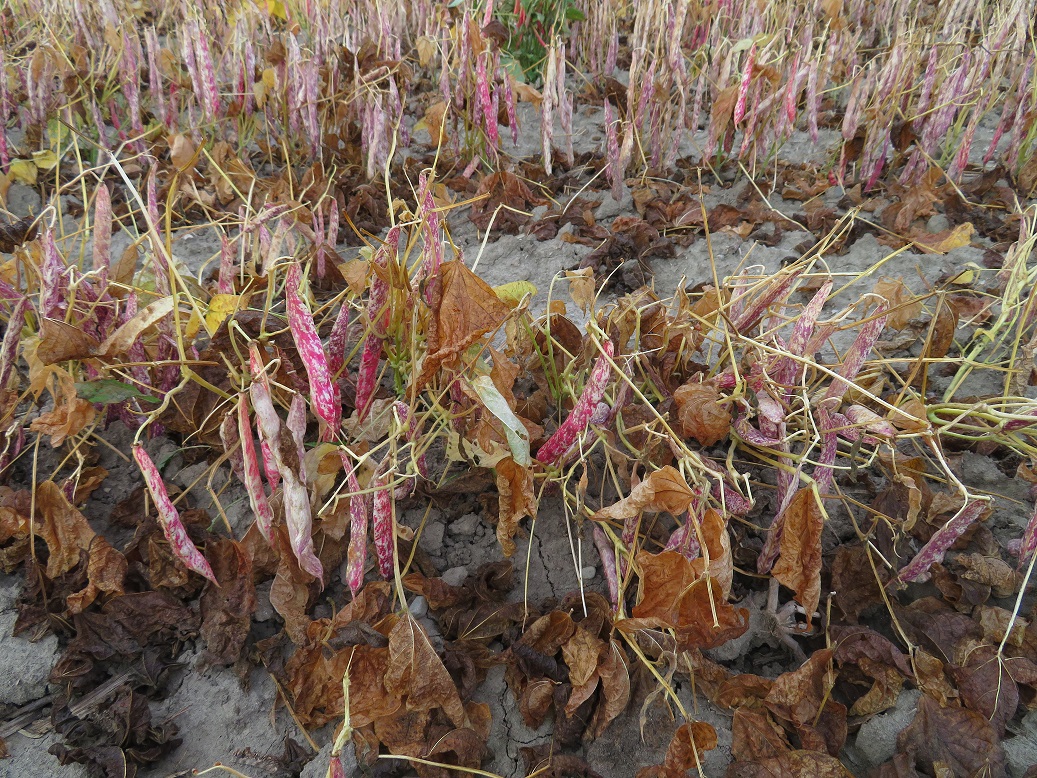Overview
Reglone is a true desiccant, used to rapidly dry down plants prior to harvest. Any green plant material contacted by Reglone will be killed. It is rapidly absorbed by foliage but has limited translocation through plants; it is a contact herbicide. There are several generic products sold in Ontario that are equivalent to Reglone. They can be found by searching the active ingredient “diquat” within the “Herbicides Used in Ontario” table located in the OMAFRA Guide to Weed Control.
Recommended Use Rate in Dry Beans: 1.25 – 2.3 L/ha (0.5 – 0.92 L/ac) with a non-ionic surfactant at 0.1% v/v
Pre-Harvest Interval: Dry down is expected within 4-10 days after application.
Interval Before Rainfall: 15 minutes
Maximizing the Performance of Reglone
The ideal environmental conditions for applying Reglone are essentially the opposite of the ideal conditions for the preharvest application of Eragon LQ (saflufenacil). It is best to apply Reglone at dusk or on a cloudy day to increase plant uptake before cell membranes are disrupted and necrosis occurs.
Reglone does not advance the maturity of the beans and does not lower moisture content of the beans. The label states it should be applied at 80-90% natural leaf defoliation and when at least 80% of the pods have turned yellow. Pod colour change is the best indication of maturity; leaf drop and leaf colour are not always good indicators of the condition of the beans in the pods. Once a herbicide is applied, late pods will not continue to mature so ensure the beans have the desired colour before application and are not green when split open.
Achieving good coverage of the target plants is important with contact herbicides. The spray water volume should be a minimum of 225 L/ha (24 gal/ac), up to 550 L/ha. For more tips on achieving good coverage see “Pro Tips for Pre-Harvest Sprays” at Sprayers101.com.
When applied on crops to be used for seed sale, Reglone does not affect germination of seed.
Effectiveness of Eragon LQ on weeds present prior to harvest
There is limited public research comparing performance of pre-harvest treatments on different weed species. Dr. Peter Sikkema has conducted six trials over three seasons on edible beans and his results are summarized below. Regardless of treatment used, the expectation should be that the pre-harvest treatment will improve harvest efficiency, but it will not result in a complete “dry down” of target weeds.
Table 1. Visual Control of lamb’s-quarters, ragweed, pigweed and foxtail 8 days after application of various desiccant treatments
| Pre Harvest Treatment |
Visual Control (%) 8 days after application |
|||
| lambsquarter | ragweed | pigweed | foxtail | |
| Aim EC (47 mL/ac) + NIS1 (0.25% v.v) | 30 | 12 | 29 | 7 |
| Eragon LQ (59 mL/ac) + Merge (0.5% v.v) | 46 | 73 | 64 | 26 |
| glyphosate 540 g/L (0.67 L/ac) | 29 | 17 | 38 | 63 |
| Ignite (1.2 L/ac) | 70 | 66 | 65 | 52 |
| Reglone (0.92 L/ac) + NIS1 (0.1% v/v) | 73 | 80 | 78 | 47 |
| Valtera (42 g/ac) + MSO Concentrate (1 L/ac) | 38 | 52 | 41 | 32 |
| 1 NIS = Non ionic surfactant (numerous products/trade names are available)
Source: Dr. P. Sikkema, 6 Trials: DB10D1A, DB10D1B, DB11D1A, DB11D1B, DB12D1A, DB12D1B. Weed Control Trials Research Report, 2010, 2011 and 2012. University of Guelph, Ridgetown Campus. |
||||
Confirm with your buyer before applying
Bean dealers have restrictions in place on what products can be applied pre-harvest for certain bean classes or end markets. The producer must confirm with their dealer which pre-harvest products are acceptable on their dry bean crop.
Search for pesticide labels HERE. Review the OMAFRA Guide to Weed Control – Pub 75 HERE.
